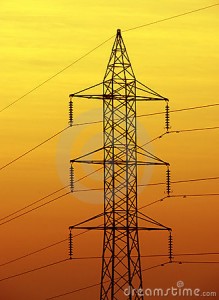New article – Power Distribution of Electricity Explained: A Beginner’s Guide
 It is often asked ‘what is power distribution’? Power distribution is the delivery of electricity to an end user in the final stage. In the current day and age, the primary circuit leaves the sub station and will then reach the meter socket of the end user. The electricity will vary from 2300 volts all the way up to 35,000 volts dependant on the load, distance and standard utility practice- source -http://en.wikipedia.org/wiki/Power_distribution
It is often asked ‘what is power distribution’? Power distribution is the delivery of electricity to an end user in the final stage. In the current day and age, the primary circuit leaves the sub station and will then reach the meter socket of the end user. The electricity will vary from 2300 volts all the way up to 35,000 volts dependant on the load, distance and standard utility practice- source -http://en.wikipedia.org/wiki/Power_distribution
A substation will have a transformer which will feed distribution cables, reducing the voltage as the electricity passes through. The conductors which distributed can often be seen on over head pole lines, which often run through the UK countryside, or, in more busy areas where this is not possible, the cables will be buried underground.
Varying loads are required dependant on the end user. A home owner will not require the same amount of electricity as an area where industrial activity is rife. In built up busy areas, a ‘three-phase’ system is used to meet the varying demands of the consumer. This is different to power distribution in rural areas where a ‘single-phase’ system is installed as this is usually the most economical solution as three-phase power is not required for the amount of customers.
Most of the time, it is only large end users who will take a feed of electricity straight from distribution voltages, whereas most customers will have a transformer, reducing the voltage to a low voltage which is commonly used by interior wiring systems or lighting systems. The transformer itself will be set into the ground or possibly pole mounted dependant on the area where the transformer is going.
In more abstract, rural areas, the transformer is likely to be mounted onto a pole, serving only one end user, completely the opposite to more densely populated areas where a number of consumers may be connected.
In very dense city areas, a secondary network may be formed with many transformers feeding into a common bus at the utilization voltage. Each customer has an “electrical service” or “service drop” connection and a meter for billing. (Some very small loads, such as yard lights, may be too small to meter and so are charged only a monthly rate- source-http://en.wikipedia.org/wiki/Power_distribution
It is likely that a customer’s system will be connected to the ground, this will limit any high voltage that may occur should a failure occur in the distribution transformer or if the high voltage conductors fall on the low voltage conductors.
Stray voltage problems can occur due to the multiple connections between the customer ground and the utility ground connections. This is particularly dangerous should this happen where people have swimming pools or other areas where an electrical current poses a serious safety threat.
For more information on power distribution please visit CMD Ltd


